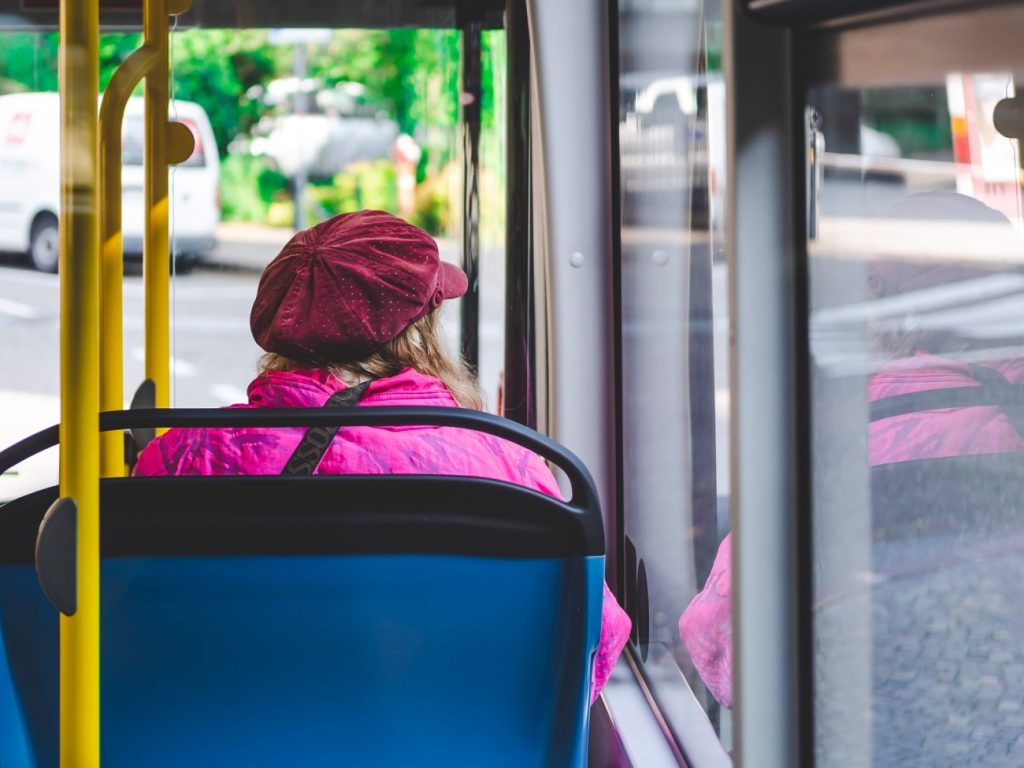09/02/2022
Perception of the risk of COVID-19 infection on public transport is 70% lower among regular users than among occasional users
Research led by the URV has determined the impact of the pandemic on the journeys made by residents and visitors to the Camp de Tarragona region and on the mental health of public transport users

Research led by the URV has determined the impact of the pandemic on the journeys made by residents and visitors to the Camp de Tarragona region and on the mental health of public transport users
Public transport has been perceived as one of the main sources of COVID-19 infection since the beginning of the pandemic, which has led researchers at the Universitat Rovira i Virgili (URV) to study the people who have continued to use public transport during the pandemic to determine the impact it has had on their perception of the risk of infection and, consequently, their well-being and mental health. The results obtained from a survey of 2,791 people, the only one of its kind to date in Spain, indicate that public transport is the area where they perceive a greater risk of infection than other places, such as at work or in bars and restaurants. However, those who have no alternative means of transport have a 70% lower perception of the risk of contracting the disease while travelling than other users, because repeated use of public transport without testing positive for COVID has led to a return of confidence in this mode of transport.
After the most restrictive stage of the beginning of the pandemic, by November 2020 the daily commuting among the residents of Camp de Tarragona region had reduced by 30%, according to the Daily Mobility Survey carried out on 13,229 people. Public transport has been the most affected of all modes of transport, with a 47% reduction in use compared to the pre-pandemic situation, especially because it has been singled out as risky in public debate. Thus, on a scale of 1 to 10 (where 1 means not at all and 10 means very much), public transport is the area where the risk of contagion is perceived to be highest at 5.5, ahead of commercial establishments (5.4), bars and restaurants (5.3), work (4.7), and visits to the homes of relatives and acquaintances (3.8).
In contrast, studies carried out in other countries have shown that the implementation of measures to prevent contagion, such as wearing a mask, reduces the risk by over 98%, according to the researchers. For this reason, the URV researchers have concluded that effective communication campaigns are needed to persuade the population about the safety of public transport, not only to prevent the negative effects associated with the increased use of private vehicles, but also to reduce the negative effects of COVID-19 on the emotional well-being and mental health of users.
Worsening of mental health
This is because the surveys carried out as part of the project indicate a worsening in the mental health of the population today compared to before the pandemic: 66.2% of the people surveyed felt satisfied or very satisfied with their lives, but since the pandemic this percentage has dropped to 36%. With regard to feelings of anxiety and fear, 72.2% of the people surveyed had never or rarely felt anxious at the beginning of the pandemic, whereas now only 42.5% were in this situation. With regard to feelings of sadness, despair or depression, 74.2% had never or rarely had them before the pandemic, but after the start of the pandemic this percentage had decreased by 20 points.
Furthermore, the analyses used econometric techniques that could evaluate the relationship between anxiety and the perception of the risk of infection when using public transport. The conclusion was that users who have a greater perception of risk of infection on public transport have higher levels of anxiety. More specifically, the results show that a 1-point increase in the perceived risk of infection on public transport (on a scale where 1 = no risk and 10 = very high risk) translates into a 4% increase in anxiety.
Positive impact on tourists’ emotional wellbeing
During a conference entitled “Effects of the COVID-19 pandemic on the mobility of resident and visitor populations in the Camp de Tarragona region” the URV-led team also provided data on journeys by visitors, which fell by 70% in the Camp de Tarragona region in 2020, primarily due to the decrease in international visitors. They also provided data showing that for 60% of tourists the visit had had a positive impact on their emotional well-being.
Management of mobility in natural areas
The destinations that have received the greatest increase in visitor numbers during the summers of the pandemic have been natural areas, a phenomenon that is perceived by those who manage these areas as a risk to their environmental balance. In this regard, the project includes their recommendations for the appropriate management of visitor arrivals, and foresees measures such as the regulation of parking where necessary.
These are just some of the conclusions of two projects by a multidisciplinary research team from various institutions (Universitat Rovira i Virgili; Eurecat; University of California, Berkeley; Universitat Jaume I; and the Camp de Tarragona Territorial Mobility Authority) led by Aaron Gutiérrez, researcher at the URV’s Department of Geography and member of the Territorial Analysis and Tourism Studies Research Group (GRATET). The results were made public today at a conference and are the result of the projects “COVID-19 and mobility in tourist areas: changes in patterns and their effect on the physical and mental health of visitors and residents”, financed by the Supera COVID-19 Fund of Banco Santander and CRUE Spanish Universities, and “Tourist mobility in the context of pandemics on the Costa Daurada and Terres de l’Ebre: emergents challenges and proposals for sustainable planning post-COVID-19”, financed within the framework of the collaboration agreement between Tarragona Provincial Council and the URV.
More news about: Coronavirus
